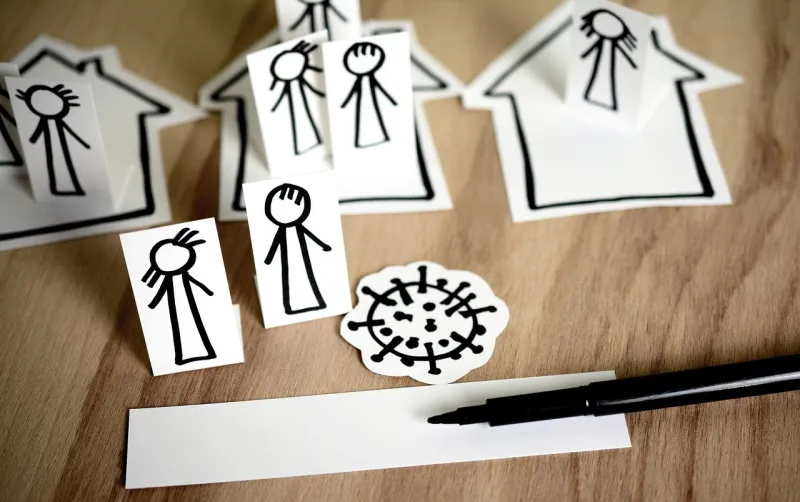Dear fellow students,
Our names are Sai and Sameer. We are two undergraduates who, like many of you, went back to our hometowns in March as school shut down. For many students, returning home during a global pandemic has been difficult, to say the least. We (and many of our fellow upperclassmen) spent our first years at Stanford building a community unlike that at home — a sense of place and purpose that we shared exclusively with those on campus. When we returned home, we felt surprisingly disconnected from our neighborhoods and we wanted to understand if this was a shared experience.
While most media attention regarding COVID-19 has focused on high-risk groups, this pandemic has derailed the lives of many youth, too — 8.8% of all COVID-19 cases in the United States are patients from age 0 to 24, 1.4 million students were displaced out of school and there are now over 7.7 million unemployed youth. Indeed, these factors have had psychological impacts, and up to 14.4% of young adults are now displaying signs of poor mental health. The COVID-19 pandemic has pressured college students while they are trying to develop their identity, values and ambitions.
Beyond the turbulence caused by COVID-19, we are also amid major social and political unrest with surging Blacks Lives Matter activism concerning issues of racial inequity and police brutality. To some extent, these issues must have affected how you view your place in society and you must be feeling their effects on your education.
With so many challenges affecting communities everywhere, we sought to uncover how college students are redefining their views on engaging with their geographic home communities as they returned home. With fellow Stanford undergraduates, we started researching how college students’ perspectives on community are changing. We started by sending an initial survey to 423 college students from Stanford and other institutions that gave us initial insights into how students typically engaged with their neighborhood. From the quality and diversity of opinion in responses in the survey, we selected seven students from these various institutions to participate in in-depth interviews. These interviews helped us further understand each student’s unique thoughts on community and how they were impacted during their time at home. We identified two important, qualitative trends:
First, interviewees did not see their home communities during quarantine as conducive for community engagement. Several interviewees believed they had low social standing in their neighborhoods because of their young age and considered their ideas less important than those of older community members. Additionally, some students felt the non-permanence of their current living situations discouraged engagement in their home communities. With future plans of employment or the prospect of returning to college campuses, many interviewees believed that rooting themselves in their hometown was not worth the effort. Rather, maintaining college connections during the pandemic was seen as more beneficial than (re)forging connections back home. These findings raise questions, however, about mobilizing young members of the community during times of crisis. With organizations like UNICEF outlining guides to engage youth in COVID-19 responses, can we truly expect highly effective youth involvement if college students do not feel actively attached and involved in their home communities?
Second, we saw that interviewed students within neighborhoods with a strong racial minority presence — particularly Latinx, South Asian and East Asian — felt isolated by different community norms (e.g. views on household involvement in the community). Some interviewees from these communities echoed statements like “self-reliance is built into [our] culture” and “neighborly connection is not of interest.” Such communities seem to place less emphasis on openness and extraversion. In neighborhoods where members prioritize their nuclear family or cultural values of households differ with those of neighbors, community engagement seems less prevalent, confirming some aspects of prior research dedicated to exploring this further (here and here). For the many members of our Stanford community who identify with one or more of these racial minorities, you may have been feeling a similar disconnect in your hometowns. If so, know that you are not alone.
While we have identified interesting perspectives on youth-community relations during the pandemic, we do not have all the answers and our work does not encompass every student’s experience. Yet, we all can likely relate to the fact that COVID-19 has challenged us in new ways. College is a time when people develop our values and sense of identity outside of home. Returning home amidst this “renaissance” is a major shock, and it appears that many of us have resultantly felt like an outsider at home. So, as you continue through the academic year, take a look back at how this quarantine impacted your definition of community and your relationship with your hometown. College students encompass a large but neglected group in most news coverage of COVID-19. Yet, with an upcoming presidential election and necessary socio-political activism surging, quarantining at home may dramatically affect how youth turn out to champion the causes that matter to them and our nation.
Sincerely,
Sai ’21 and Sameer ’22
We would like to thank our team of peers from Stanford — Clara Kelley, Chelsea Chen and Haiwen Gui — for their contributions that made this project possible.
Note: We want to acknowledge that the results of our study are not generalizable across all populations, and there are many individual experiences that we may not have sampled or learned about during our investigation. We hope this op-ed serves as a launchpad for reflection and discussion about different experiences surrounding community engagement during the era of COVID-19.
Contact Sameer Sundrani at sundrani ‘at’ stanford.edu and Sai Maddineni at smaddineni ‘at’ stanford.edu.
The Daily is committed to publishing a diversity of op-eds and letters to the editor. We’d love to hear your thoughts. Email letters to the editor to eic ‘at’ stanforddaily.com and op-ed submissions to opinions ‘at’ stanforddaily.com. Follow The Daily on Facebook, Twitter and Instagram.
